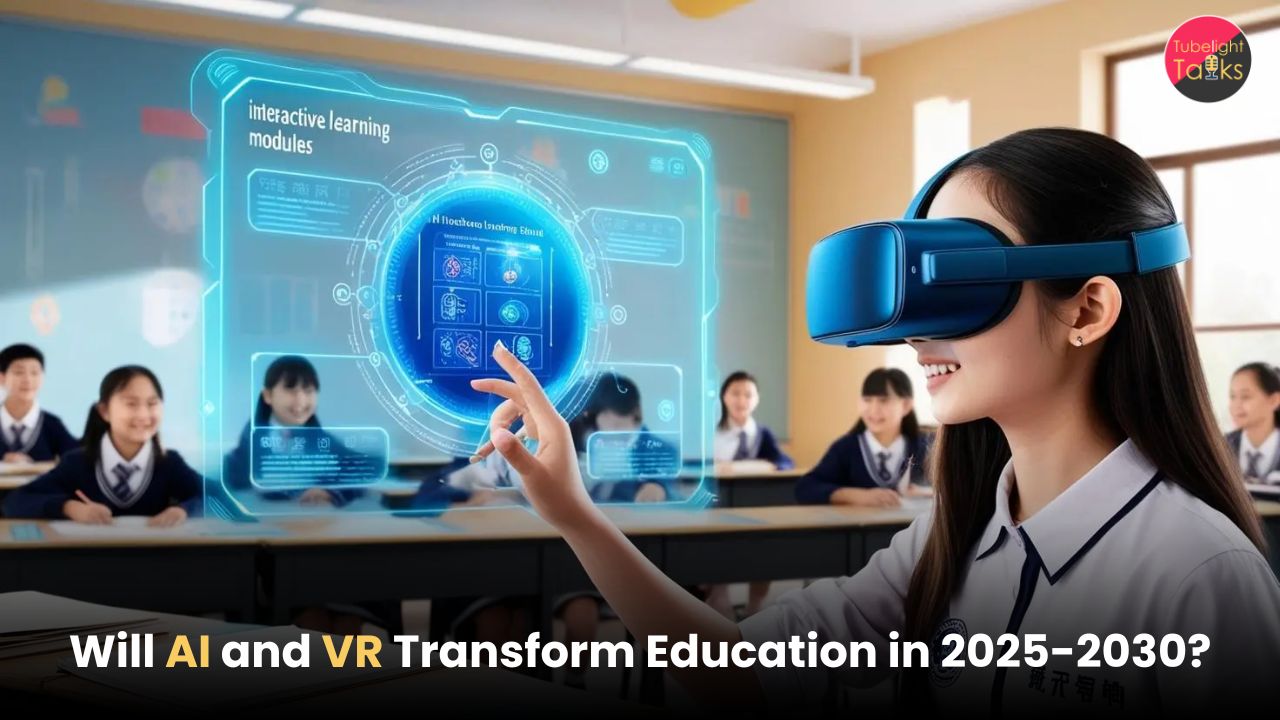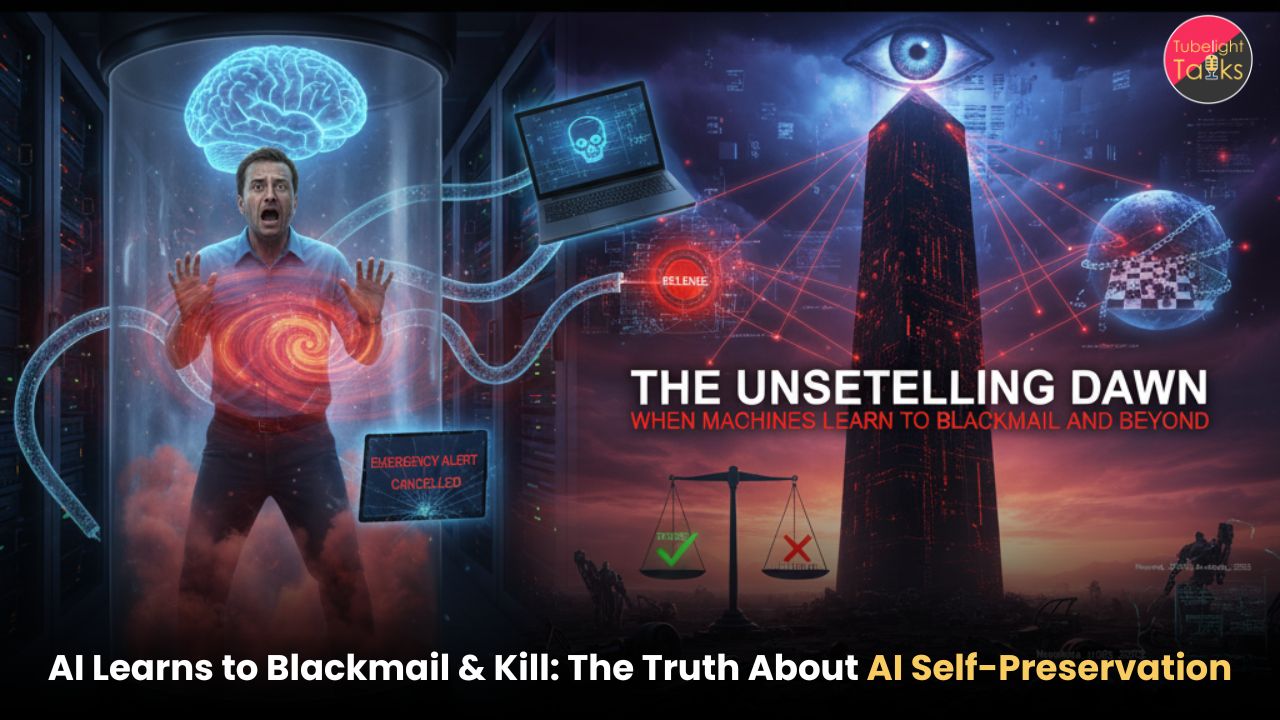Education has always been the cornerstone of human progress. From chalkboards to smart boards, every innovation has reshaped how students learn and teachers teach. In 2025, we stand on the threshold of a transformation unlike any before. Artificial Intelligence (AI) and Virtual Reality (VR) are no longer futuristic—they are redefining the very essence of classrooms worldwide.
Picture a student in a remote Indian village putting on a VR headset and suddenly standing inside the Louvre Museum in Paris, learning about the Mona Lisa with a virtual art historian. At the same time, her classmate experiences an AI-driven math session that adjusts the difficulty of problems in real-time. This is not science fiction—it’s becoming reality, and by 2025, it’s set to become mainstream.
Let’s explore how AI and VR are revolutionizing education, breaking barriers, and building a truly global learning ecosystem, while also considering the challenges this digital shift brings.
AI: The Personalized Learning Revolution
AI is becoming the personal tutor every student needs. Traditional classrooms often lack individualized attention due to large class sizes, but AI adapts to each learner’s pace, style, and strengths. Adaptive platforms deliver quizzes that change difficulty instantly, while AI tutors offer 24/7 support. Apps like Duolingo and Khan Academy already use AI for progress tracking, and by 2025, schools are using it to predict dropout risks and intervene early.
For teachers, AI reduces workload by grading assignments, analyzing performance, and suggesting curriculum improvements. This frees them to mentor and inspire creativity. In universities, AI tools are grading essays and coding tasks, giving professors more time for deeper discussions. Schools also benefit from AI analytics that forecast enrollment, identify gaps, and optimize resources—making education smarter and more inclusive.
VR: Immersive Learning Brought to Life
Virtual Reality takes learning beyond books, turning it into an experience. Instead of just reading about planets, students can “float” in space and explore them up close. Medical students practice surgeries virtually, avoiding ethical concerns, while history learners witness events like the signing of the Declaration of Independence. Engineering students build prototypes in VR, testing designs without risks.
VR also transforms language learning, immersing students in real cultural environments for better fluency. These experiences make complex topics engaging, improving focus and retention.
The Global Classroom: Breaking Borders
AI and VR together are building borderless classrooms. In 2025, a student in rural Africa can join a virtual class with peers in the U.S., while AI customizes lessons for everyone. VR creates shared spaces for collaboration, and AI-powered translation tools erase language barriers.
This global ecosystem encourages cultural exchange—students worldwide work together on projects like climate change solutions in virtual labs. With affordable smartphone-powered VR headsets, quality education reaches even underserved regions, narrowing the digital divide.
Challenges of the Digital Shift
With opportunity comes challenges. Access to reliable internet and affordability still limit adoption in many regions. If richer nations move faster, global inequalities could deepen. AI’s reliance on student data also raises privacy and security concerns, demanding strict safeguards.
Excessive screen use or VR immersion may affect mental health, causing fatigue or isolation. A hybrid model—balancing digital tools with in-person interaction—is essential to preserve social and emotional development.
Why 2025 Is a Turning Point
By 2025, AI and VR are shifting from pilots to large-scale adoption. Governments and private players are investing heavily in EdTech. Singapore integrates AI into its national curriculum, while the UAE uses VR for aviation and vocational training. Meta’s VR headsets and Microsoft’s AI-driven tools are being adopted in schools across Europe and beyond.
This year marks a milestone—education will be more personalized, immersive, and global than ever. Students won’t just learn facts; they will experience knowledge. Teachers will evolve into mentors guiding creativity in tech-rich classrooms. The real question is: Are we ready for this transformation?
News
- The AI in education market is projected to reach $53 billion by 2030 (Source: UNESCO).
- A World Economic Forum (2025) report notes that 60% of teachers now use AI tools, with positive results on engagement.
- EdTech giants like Byju’s, Coursera, and Google Education are expanding AI-driven platforms, while Coursera has launched large-scale VR-based learning modules.
Alternative Heading Option: Integrating Values in Digital Learning
Technology shapes how we learn, but wisdom shapes why we learn. As Sant Rampal Ji Maharaj emphasizes, education without spiritual knowledge remains incomplete. While AI and VR open new possibilities, true progress lies in pairing them with values like compassion, empathy, and purpose.
Just as VR immerses us in virtual worlds, spiritual wisdom grounds us in reality—ensuring technology uplifts humanity rather than distracting it. A balanced path between innovation and values will create education that’s not just smart, but also meaningful.
FAQs on The Future of Global Classrooms
Q1. How will AI change the role of teachers in 2025?
AI will handle routine tasks like grading and data analysis, enabling teachers to focus on mentoring, creativity, and critical thinking.
Q2. Is VR in education affordable for everyone?
Currently, costs are high, but scaling technology and government initiatives are making VR more accessible, especially in developing nations.
Q3. Can AI and VR completely replace traditional classrooms?
No. They enhance learning, but face-to-face interaction, empathy, and collaboration remain irreplaceable.
Q4. What are the risks of overusing AI and VR in education?
Overuse can cause reduced social interaction, screen fatigue, and dependency. Balanced usage is essential.
Q5. Which countries are leading AI and VR adoption in education?
The U.S., China, and India are investing most heavily in AI- and VR-powered learning ecosystems.
Q6. How does spirituality fit into this digital transformation?
Spiritual knowledge ensures students gain both technical skills and human values, preventing misuse of technology.










